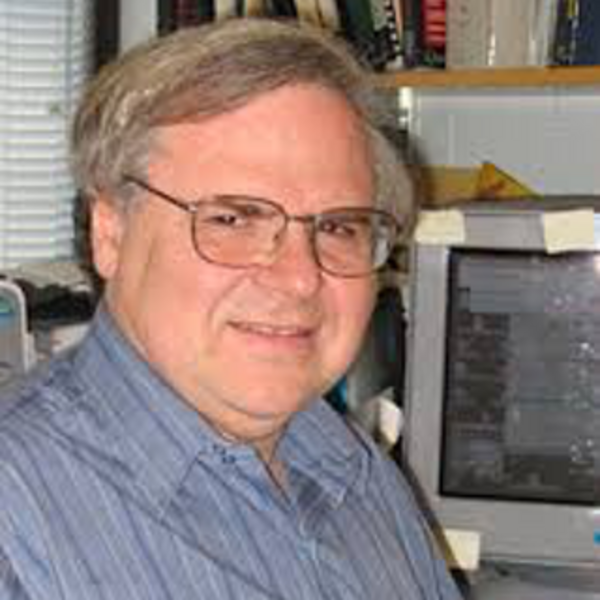David Isenman
PhD

The complement system refers to a group of some 30 proteins, two thirds of which circulate in blood plasma and the remainder being present on the surfaces of various blood cells and blood vessel walls. Through their interactions, these proteins mediate the clearance of antigen-antibody complexes and additionally provide innate immunity against microbial pathogens via antibody-independent mechanisms. Moreover, complement plays an important role in the generation of an antibody response against foreign antigen per se, thereby providing a crucial link between the innate and adaptive immune systems. On the detrimental side of the ledger, complement plays a similar role in augmenting the antibody response to autoantigens and then subsequently, in mediating autoantibody-initiated inflammation.
The research interests of my laboratory have mainly focused on the complement system proteins comprising the C3/C4/C5 superfamily, and their interacting partners. Activated forms of C3 and C4 are on the one hand subunits of multicomponent proteases, which are the key points of amplification and effector function initiation in the complement system, and on the other hand, when deposited onto a pathogen they act as opsonins facilitating "bridging" to several classes of complement receptors (CR) present on circulating blood phagocytes, B lymphocytes and follicular dendritic cells. Understanding the nature of some of these protein-protein interactions in biochemical detail will hopefully facilitate the rational design of compounds that might alleviate the acute or chronic inflammatory conditions mediated by complement.
The complement system refers to a group of some 30 proteins, two thirds of which circulate in blood plasma and the remainder being present on the surfaces of various blood cells and blood vessel walls. Through their interactions, these proteins mediate the clearance of antigen-antibody complexes and additionally provide innate immunity against microbial pathogens via antibody-independent mechanisms. Moreover, complement plays an important role in the generation of an antibody response against foreign antigen per se, thereby providing a crucial link between the innate and adaptive immune systems. On the detrimental side of the ledger, complement plays a similar role in augmenting the antibody response to autoantigens and then subsequently, in mediating autoantibody-initiated inflammation.
Components C3 and C4 respectively interact with at least 12 and 7 distinct complement family proteins. In order to localize binding sites within C3 and C4, we have employed a site-directed mutagenesis approach to test candidate binding sites suggested by the cumulative data in the literature. In recent years, many of the X-ray crystal structures of the molecules and complexes central to our area of study have been determined, including some where through collaboration with structural biologists, we have directly contributed to their determination. This has allowed much more definitive interpretation of our pre-existing mutagenesis data. Moreover, in some cases these structures have provided a platform that one could begin to exploit as a therapeutic target. As an example of this, our contribution of a new co-crystal structure of the CR2-C3d complex resolved a 10 year controversy about the location of this binding interface. In turn, the detailed knowledge of the CR2-C3d interface may allow the rational design of compounds to, on the one hand inhibit the interaction in autoimmune conditions, and on the other hand exploit it in vaccine design.
Although, even as a retiree, I am still active in my research field, I no longer have my own research group. Therefore, readers of this web page are informed that I have no openings for trainees or technicians.
Recent Publications
- Nagar, B., Jones, R.G., Diefenbach, R.J., Isenman, D.E. and Rini, J.M. (1998) X- ray crystal structure of C3d: A C3 fragment and ligand for complement receptor 2. Science 280, 1277-1281.
- Oran, A.E., and Isenman, D.E. (1999) Identification of residues within the 727-767 segment of human complement component C3 important for its interaction with factor H and with complement receptor 1 (CR1, CD35). J. Biol. Chem. 274, 5120-5130.
- Clemenza, L. and Isenman, D.E. (2000) Structure-guided identification of C3d residues essential for its binding to complement receptor 2 (CD21). J. Immunol. 165, 3839-3848.
- van den Elsen, J.M.H., Martin, A., Wong, V.B., Clemenza, L., Rose, D.R., and Isenman, D.E. (2002) X-ray crystal structure of the C4d fragment of human complement component C4. J. Mol Biol. 322, 1103-1115.
- Clemenza, L. and Isenman, D.E. (2004) The C4A and C4B isotypic forms of human complement fragment C4b have the same intrinsic affinity for complement receptor 1 (CR1/CD35). J. Immunol. 172, 1670-1680.
- Burman, J., Leung, E., Atkins, K.L., O'Seaghdha, M.N., Lango, L., Bernadó, P., Bagby, S., Svergun, D.I., Foster, T.J., Isenman, D.E. , and van den Elsen, J.M.H. (2008). Interaction of Human Complement with Sbi, a Staphylococcal Immunoglobulin-binding Protein: Indications of a Novel Mechanism of Complement Evasion by Staphylococcus aureus. J. Biol. Chem. 283, 17579-17593.
- Isenman, D.E. , Leung, E., Mackay, J.D., Bagby, S., and van den Elsen (2010) Mutational analyses reveal that the staphylococcal immune evasion molecule Sbi and complement receptor 2 (CR2) share overlapping contact residues on C3d: Implications for the controversy regarding the CR2/C3d cocrystal structure. J. Immunol. 184 , 1946-1955.
- Kajander, T., Lehtinen, M.J., Hyvärinen, S., Bhattacharjee, A., Leung, E., Isenman, D.E. , Meri, S., Goldman, A.,, and Jokiranta, T.S. (2011) Dual interaction of factor H with C3d and glycosaminoglycans in host-nonhost discrimination by complement. Proc. Natl. Acad. Sci. U.S.A. 108 , 2897-2902.
- van den Elsen, J.M.H. and Isenman, D.E. (2011) A crystal structure of the complex between human complement receptor 2 and its ligand C3d. Science 332 , 608-611.
- Carroll, M.C. and Isenman, D.E. (2012) Regulation of humoral immunity by complement. Immunity 37, 199-207.
